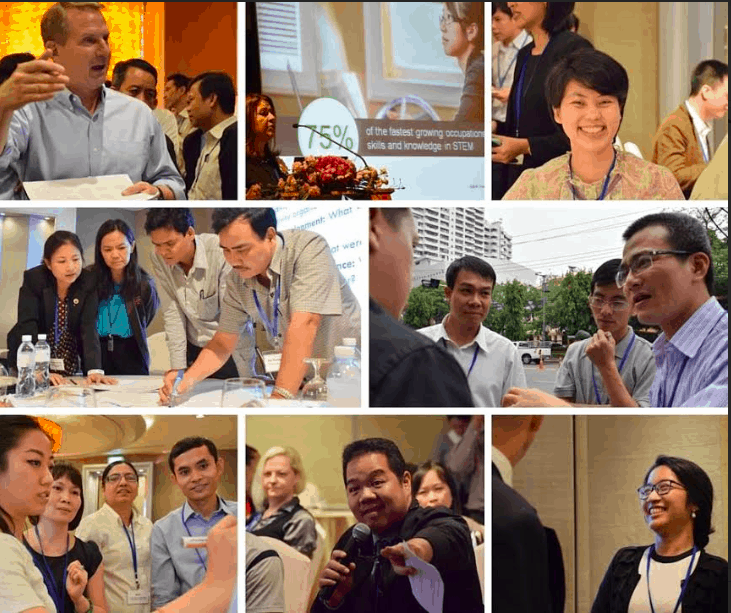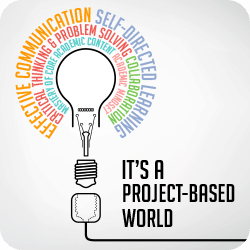What Is Our World’s Greatest Challenge?

By Catherine Browning
If you Google: ‘What is our world’s greatest challenge?’ the titles go on and on. 9,600,000 results to be exact.
- What are the 10 biggest global challenges?
- The Biggest Challenges of 2016
- 15 Current Environmental Problems that Our World is Facing
- Water – one of the 21st century’s biggest challenges
It’s obvious – our world doesn’t have a single challenge. We face multiple challenges. Complex challenges that require varying, innovative solutions developed for various and dynamic regions, cultures, customs and environments.
So how do we transform the way education once was to prepare educators, students and leaders for how the world is–not just as it is now, but for how the world will be?

It starts with problem solvers. It starts by applying educational methods and expanding instruction to generate creative, strategic problem solvers who adapt, anticipate, innovate and decipher the complex challenges before us. But to change mindsets and to change instruction, not just in the United States, but also around the world. It’s not a simple task.
Imagine 61 instructors and administrators from universities and vocational institutions throughout Cambodia, Laos, Myanmar, Vietnam and Thailand who took to the streets of Bangkok to answer the question:
How can you improve the daily experience of people who live and work in this area of Bangkok?

In teams of six, instructors who are pioneering USAID’s MekongSkills2Work approach were tasked with analyzing the challenges – transportation, pedestrian, environmental or economic development – that people face every day. Instructors began by observing environments, surveying individuals and conducting neighborhood inventories to research. Then they evaluated and developed an innovative solution for their final pitch.
To build a better Bangkok, instructors were taken out of the classroom–but more importantly, out of their comfort zone.
Click here to learn more about the MekongSkills2Work Training Model and its Sourcebook.
Achieving a Mindset Shift
Thinking about and applying project-based learning is a mindset shift for any teacher–a shift from the status quo of what teaching was to what learning could become. Taking teachers out of the classroom is the first step to achieving a mindset shift that resonates beyond a thought and into sustainable action. Ensuring instructors learn is the first step to ensuring that all students, of all ages, in all areas of the world, receive not just a technical understanding but the work-readiness skills necessary to compete and to thrive in employment opportunities.
Our world is changing. Economies are changing. Populations are expanding. The future – a project-based world – is now our reality, where entrepreneurs and problems solvers must question the status quo and innovate to improve their communities and our world.
As everything around us changes, there is little expectation that things will stay the same; education – the foundation of learning and opportunity – should be no different. But in order for a project-based world to thrive, we must equip all students, from rural Vietnam to inner-city New York, with the knowledge and the skills required to compete and excel in the world we are moving towards.
Instructors throughout the world are shifting their instruction towards project-based learning in order to match our increasingly project-based world.
A GlobalEd Readiness Network
The five-year USAID Connecting the Mekong through Education and Training (USAID COMET) project builds the MekongSkills2Work Network, starting with these 49 instructors, 12 administrators and 12 institutions in five countries that will develop, foster and grow a network of universities and vocational centers to ensure all students receive an education that allows them to succeed.
As a part of this project, instructors will apply instructional best practices, communities of practices and industry linkages toolkits within their instruction and institutions, ultimately exposing hundreds of thousands of students to the work-readiness and technical skills required to compete and thrive in employment opportunities now and in the future.
Every student has a right to an education – but every student has a right to an education that prepares them for the world as it is now and the project-based world that we create for tomorrow–a world that will require project-based learning and project-oriented skills in order to excel and achieve.
This blog is part of “It’s a Project-Based World” series. To learn more about this series and to learn ways that you can contribute, click the icon below to go to the Project-Based World page.
Join in the conversation at #projectbased. |
For more, see:
- It’s Not Just About The Projects
- 13 Tips for Students Getting Started with Project-Based Learning
- It’s a Project-Based World. Let’s Prepare Students for It.
- Getting Smart Podcast | It’s a Project-Based World and a PBL Movement
Catherine Browning is a Country Manager for Vietnam through the USAID COMET program. Follow her on Twitter: @cmoorebrowning
Stay in-the-know with all things EdTech and innovations in learning by signing up to receive the weekly Smart Update.







0 Comments
Leave a Comment
Your email address will not be published. All fields are required.